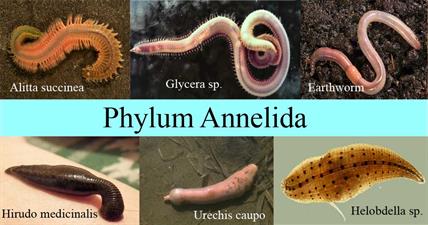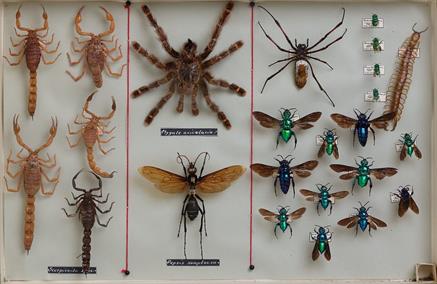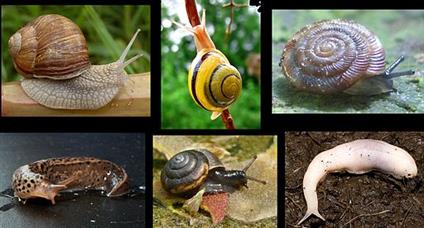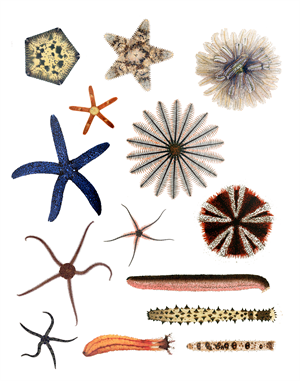
PUMPA - SMART LEARNING
எங்கள் ஆசிரியர்களுடன் 1-ஆன்-1 ஆலோசனை நேரத்தைப் பெறுங்கள். டாப்பர் ஆவதற்கு நாங்கள் பயிற்சி அளிப்போம்
Book Free DemoPhylum Annelida:
- These are triploblastic animals with a true body cavity.
- They have a body that is segmented from head to tail.
- They are mostly hermaphrodites (Both bisexual and unisexual).
- They have locomotory structures known as parapodia for locomotion.

Phylum Annelida
Phylum Arthropoda:
- This is a phylum that consists of the largest group of animals.
- These triploblastic animals have segmented bodies.
- Their body has a thick chitinous cuticle which forms an exoskeleton.
- They have jointed legs. Hence they are known as arthropods as the term 'arthropoda' means jointed legs.
- They are unisexual and show sexual dimorphism.

Phylum Arthropoda
Phylum Mollusca:
- These are triploblastic soft-bodied animals.
- The body of these animals is unsegmented.
- These organisms have a muscular head, foot, visceral mass, mantle, and a calcareous shell.
- They have a sexual mode of reproduction.

Phylum Mollusca
Phylum Echinodermata:
- These are exclusively marine triploblastic animals.
- Their body is covered with spines and spicules.
- Their body lacks segmentation and definite organs.
- They use water vascular systems for the transport of food, gases, and water throughout their body.
- Locomotion and feeding are through tube feet.
- They undergo a sexual mode of reproduction.

Phylum Echinodermata
Reference:
https://en.wikipedia.org/wiki/Echinoderm#/media/File:Echinodermata.png
https://www.flickr.com/photos/nmbeinvertebrata/45902849942/in/photostream/
https://upload.wikimedia.org/wikipedia/commons/thumb/8/8a/Pulmonata_various_examples_3.jpg/512px-Pulmonata_various_examples_3.jpg
https://upload.wikimedia.org/wikipedia/commons/a/a1/Phylum-Annelida-Diagram.jpg